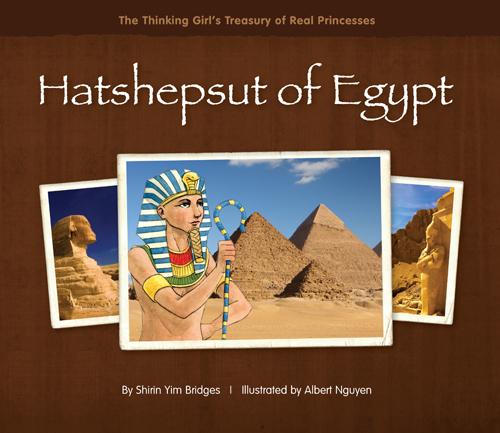Disclosure: I was sent this book to review
free of charge from Goosebottom Books.
All opinions in this post are my own. I did not receive
any other compensation for this review. I am including links to each
item for your convenience but do not receive anything if you purchase
them.
Today we are honored to review a book about a very strong woman, Hatshepsut. Have you heard of her? I hadn't, so I found this book fascinating. The book is Hatshepsut of Egypt by Shirin Yim Bridges and illustrated by Albert Nguyen. It is part of The Thinking Girl's Treasury of Real Princesses.
This is a series of books that share real princesses with girls. These are not your average fru fru princesses who wear pretty dresses and sit around waiting to be saved by a prince. These are women who had strength and guts to rule countries.
Today we are honored to review a book about a very strong woman, Hatshepsut. Have you heard of her? I hadn't, so I found this book fascinating. The book is Hatshepsut of Egypt by Shirin Yim Bridges and illustrated by Albert Nguyen. It is part of The Thinking Girl's Treasury of Real Princesses.
This is a series of books that share real princesses with girls. These are not your average fru fru princesses who wear pretty dresses and sit around waiting to be saved by a prince. These are women who had strength and guts to rule countries.



































.svg.png)













